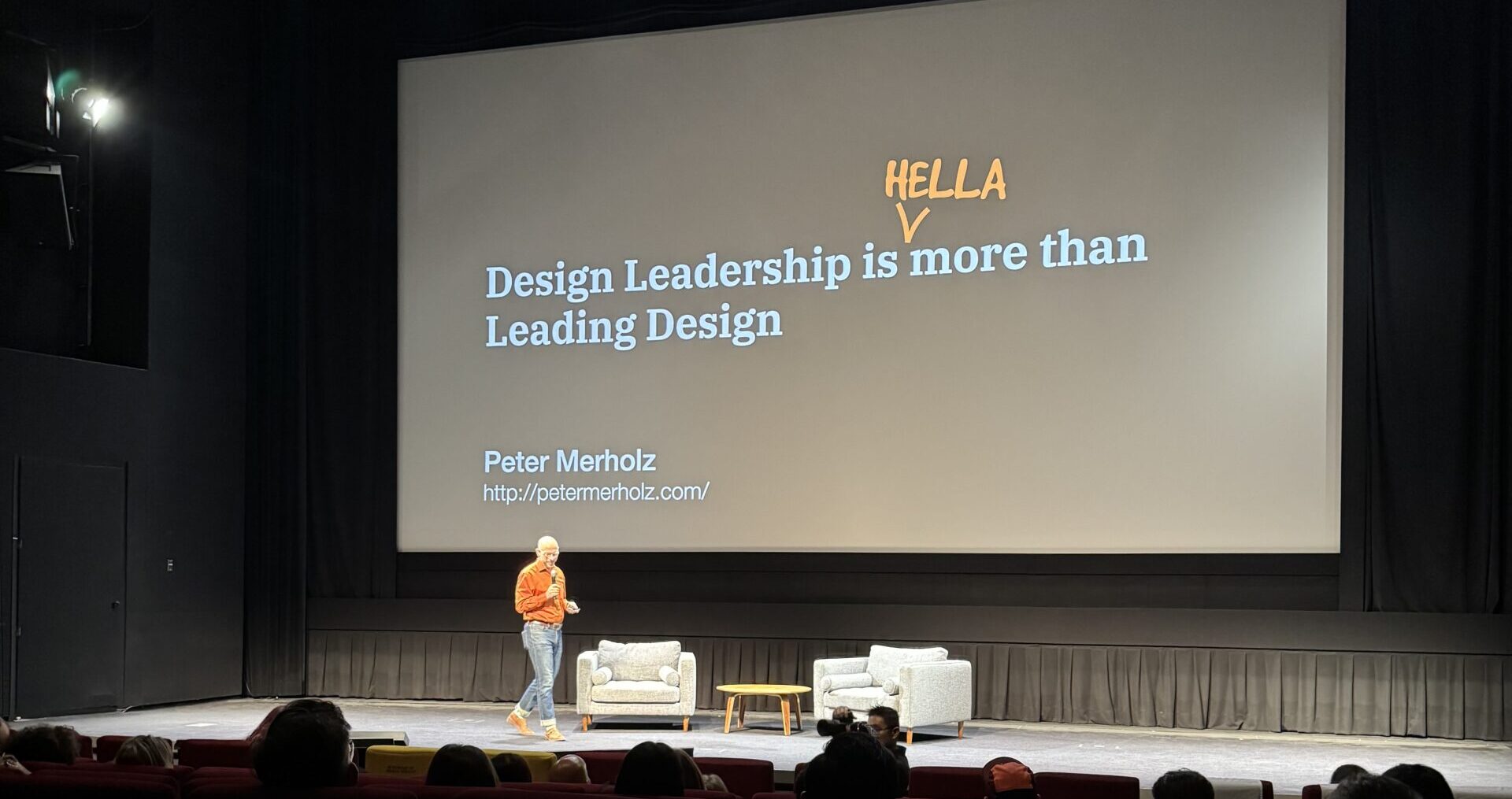
During the last week of January 2024, I attended the Design Leadership Summit, a conference for designers by designers, in Toronto. It was a great two-day event, filled both with great content and well designed interactions to help everyone there make new connections. I got to see many old friends as well as make some new ones. The topics ranged from the evergreen (value of design) to the topical (how AI will impact design and experiences). Overall, I got a good pulse on what’s top of mind, the challenges, and the opportunities for design leadership, much of which resonated with my own experience and thinking.
While not exhaustive, here are a few things that stood out.
When we talk about design leadership, there’s a wide spectrum in team size.
Many of the design leaders I talked to led teams of less than 10. That represented the entire company’s design team, not just a part of a larger design org. For example, Patagonia only has four designers (note: these are digital design teams, and may not represent other forms of design within a company). On the other side of the spectrum are Capital One (700), Chase (900 and rising), and IBM (3,000). That’s quite a bit of distance. While the lessons shared seemed to resonate across the board, leading 100s/1000s add immense complexity. With a small team, you can know all the designers, stakeholders, and the work. With a larger team, this is impossible, which means your relationship to the quality of the work is different.
Scaling down and rightsizing was dreadfully top of mind.
The conversation around cuts to design teams was prevalent. Several of the speakers had ex- in front of their company, as they were no longer employed. There was definitely some “it’s tough out there” sentiment. Though also hope (some teams are hiring, like Chase). Leaders were encouraged to be transparent, authentic, and human with impacted people and teams. It was also acknowledged that building relationships helps when these tough moments happen (totally agree).
The pace of work feels unsustainable.
During a roundtable discussion I was part of at lunch, leaders expressed frustration with the pressure to design more quickly. This results in a lack of experience strategy, no research with customers, or half baked or stripped down products, all of which can lead to not only to a poor experience, but also the wasted cost in redoing the experience later. Or worse, leaving the poor experience in place as the team moves on to the next thing (the reality is most teams do not have the time or resources to iterate and are measured on launches not iterations). On the flip side of this, we noted the companies people most admire for quality and design seem to take their time, and most consumers do not like their products to constantly change. Hmmm…
There’s a good chance you’re banging your head against maturity.
There are many models that exist to define design maturity and assess where you are (NN/g, Deloitte, and others) . Though many teams and organizations are not at a high level of design or product development maturity. Trying to operate outside of what’s possible for your org—regardless of how you believe the org should be operating—leads to constant battles, frustration, burnout, and feeling unvalued. To improve organization maturity, you need to be a change agent. Though unlike the current pace of work, changing the org to enable greater maturity may take years (and years, speaking from experience).
AI will change the nature of the interface, and how we design, we’re just not sure how.
While chatbots and conversational AI have been around for a while, the latest advances in AI are making it more likely that those experiences will be good enough to deliver on their initial promise. Natural language interaction may let people get what they need without having to navigate a pre-structured IA. What will that look like? We don’t know yet. So speculate away!
On the design side, AI may make us more productive by eliminating detailed design tasks, allowing designers for focus more on the intent than the details. But what if you like focusing on the details? And if a great designer is formed through time and effort sweating the details, what will that mean for the future of design expertise? Again, we don’t know yet.
All in all, I really enjoyed the conference. I left with lots of thoughts percolating and lots of good vibes from hanging with great people. And it was even warmish for January in Canada. Well done to all involved!
